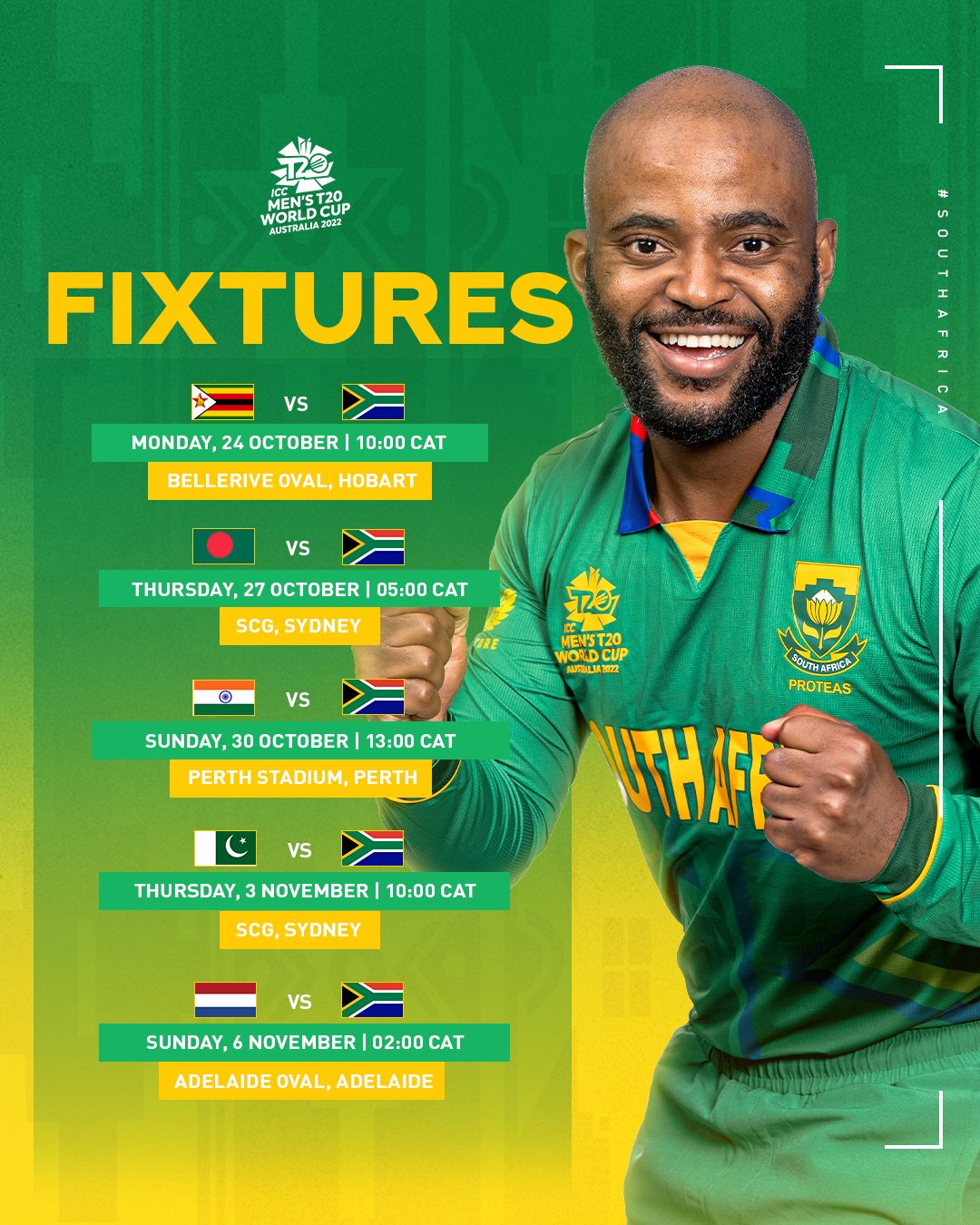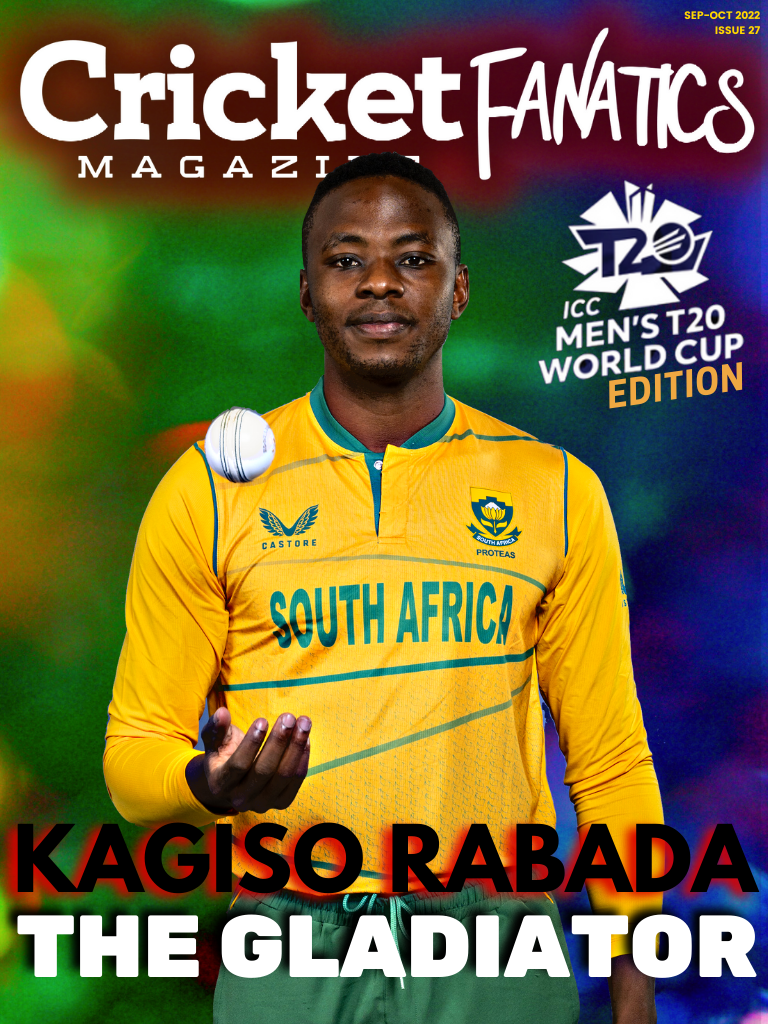
Table of Contents
EDITOR'S NOTE
T20 World Cup 2022
Khalid Mohidin
Founder and Editor - Cricket Fanatics Magazine
Lights, Camera, Action!
The T20 World Cup is here, and this time South Africa will aim to take one step further than they did last year.
The current group of Proteas are aiming to rewrite history by becoming the first team to lift an ICC World Cup trophy. The preparation is now over and it's time to perform.
But as time passes by, the game continues to evolve. The T20 game is changing faster than any other format.
Preparation and planning have become such a vital part of every player's game and now more than ever, specialists continue to rise in this fast-paced format.
In this issue, we will be discussing what it takes to prepare for a T20 World Cup. We zone in on South Africa's chances in the T20 World Cup and how they prepared for the tournament.
We interview players, in and out of the camp, coaches who have worked with some of the best T20 players and journalists who have covered the Proteas' journey until this point.
So sit back, grab a beverage and a snack, and enjoy issue 27 of Cricket Fanatics Magazine.

How you can help promote SA Cricket
By Khalid Mohidin
Hey, guys! Welcome to Cricket Fanatics Magazine, the first and only fan-driven Cricket publication in South Africa.
This is a very special announcement that I believe will change the way cricket is supported in South Africa.
I started this venture on 1 July 2019 with a vision to get fans from all walks of life engaged with the game and give them access to the personalities in South African Cricket.
We want to tell the untold stories of South African cricket and we want fans to be heard.
Since we started, we covered the Mzansi Super League, Women’s Super League, Proteas Men and Women International Test, ODI and T20I series, as well as school and club cricket, with the aim of providing entertaining, engaging and educational content.
But haven't stopped there.
We started a Monthly Magazine where we provide multi-media content, including exclusive features, opinion pieces and analysis.
This works hand-in-hand with our YouTube channel where we produce unique cricket shows that allow fans to call in and have their say.
We have the Daily Show, which reveals all the major talking points in South African cricket, the Sunday Podcast Show where we sit back, relax and engage with the live chat, answering all the questions fans have about us and the game.
We have Off-Side Maidens, the first ever All-Women’s Cricket Show on YouTube, which helps empower women in cricket and gives them a place to share their own views on not only women’s cricket but all cricket.
We have a Legends show, where we interview all legends in cricket.
To produce all of this, we’ve invested a lot of money, time and effort to bring this to you for free.
But to keep this going we need your help.
So we have opened a Patreon account.
In the past, the super-rich supported the work of artists as patrons of the art.
Today, we are fortunate that technology has enabled anyone to become a patron of creative work, even if they are not billionaires.
We have therefore launched a campaign for you as a Cricket Fan to become a patron and support us as an independent, bootstrapped publisher.
As a Patron, you also get your voice heard as a Fan.
Plus: You have the opportunity to become more engaged with the content we produce.
Every month we produce at least:
- 60 Website Articles
- 20 Daily Video Shows
- 4 Weekly Podcasts
- Match Previews
- Match Reviews
- Video Interviews
- And more…
So please join our Patreon today initiative today. Even a tiny amount can make a big difference.
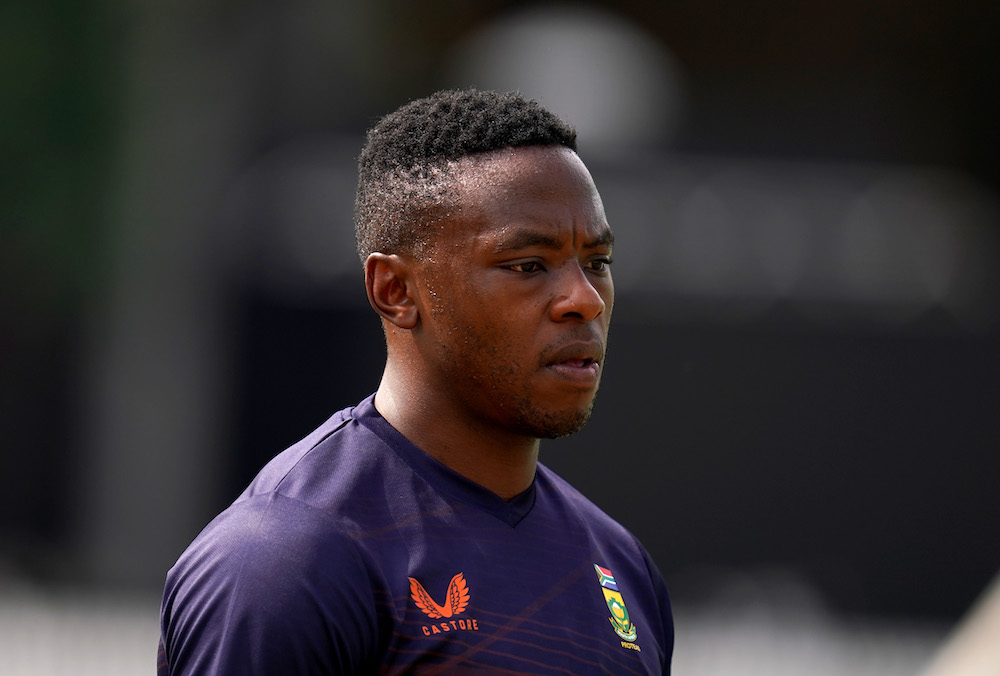
Kagiso Rabada: The Gladiator
By C.S Chiwanza
Normally, Kagiso Rabada's first delivery is a proper Test cricket delivery. A hard-length ball targeting the top of off-stump.
Rabada does not believe in bowling looseners. Looseners and warm-up deliveries are taken care of before the match. The moment he crosses the boundary ropes, he is switched on to the game.
He is a gladiator fighting for his future. As the leader of the attack, he sets the tone of the bowling attack, it is up to him to put the team on the front foot.
Years of international and IPL cricket means that Rabada knows where to bowl and where not to bowl to batters. For those he has not faced, there is always video footage. Rabada is a technician; he studies the opposition.
So, when he stands at the top of his mark, he knows there is no time to get familiar with the batter. And just like that, he goes from zero to 145km/h in one ball. It’s like a car crash from nowhere, happening before you know it.
Looseners are wasted energy.
When he was 11, Rabada was introduced to cricket by his friends and the only thing he wanted to do from that point was to bowl fast. The drive to bowl as fast as he can has not left him. Of course, he has an array of slower ball deliveries – slower deliveries have become a necessity in white-ball cricket.
“Part of spin bowling is to make the batsman think something is happening when it isn’t,” Shane Warne told Len Hutton in 2010.
Pace bowlers are a different type of trickster, part of their thing is to make the batter think nothing is happening when it is. Slower deliveries are disguised to look like fast deliveries. That is how one successfully traps a batter.
Rabada loves it when he fools a batter with a well-executed slower ball. He loves it more when he does it with a fast delivery.
Even though he does not bowl looseners, Rabada does a bit of prospecting with the new ball. A bowling spell builds and builds in Test cricket, allowing the bowler to work the pitch and the batter out.
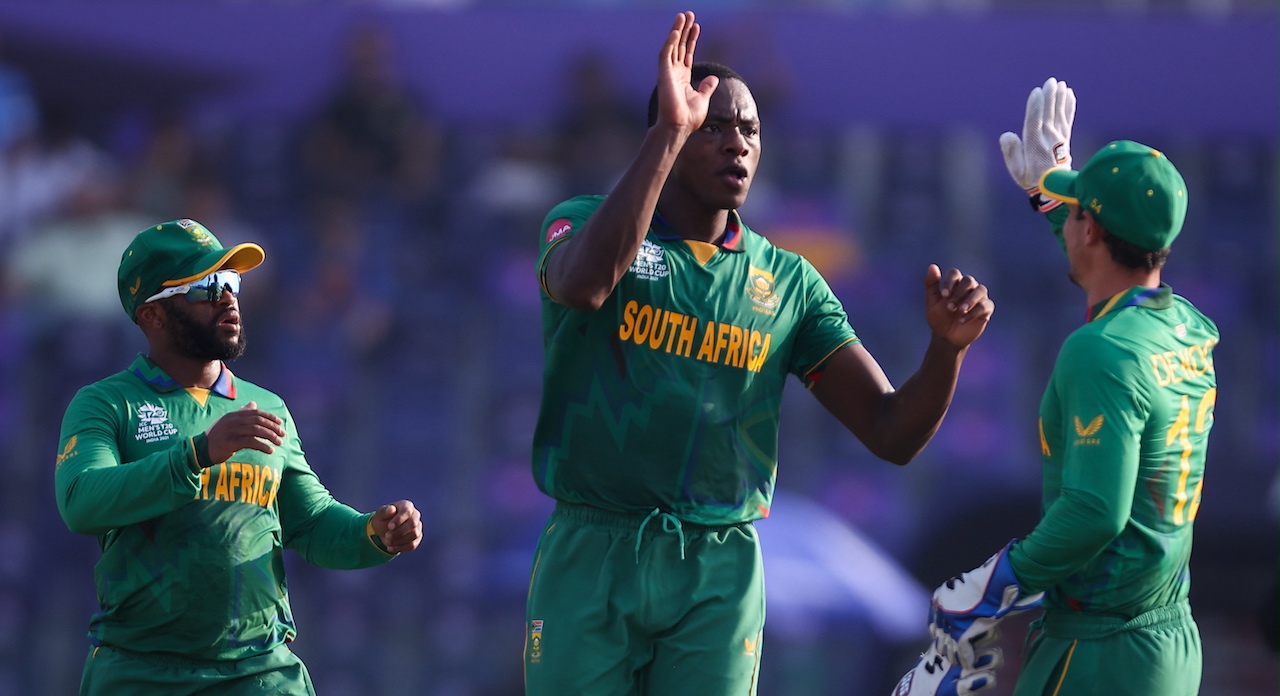
EPA/DAVID GRAY AUSTRALIA AND NEW ZEALAND OUT
In ODI cricket, you have a few balls to play with – up to five overs.
T20 spells are short. A lot of them are two overs long. Sometimes three if your captain feels that you are doing something special and can reduce the opposition's campaign to rubble. Sometimes you get only one over in a spell. There is not a lot of time. You need to hit the ground running. A batter has just 0.4 seconds to react to a delivery. It's not much time. Rabada tries to always make use of that slight advantage.
In the first over, the batter is still trying to get a good measure of the pitch. But, if you bowl anything loose, the batter will paste you for six. Whoever gets the first blow in carries momentum and an advantage in the over. A six off the first ball puts the bowler under pressure. A hard-length delivery keeps the batters honest.
The white ball does not swing a lot; it swings for a brief period. Three or four overs, maybe five. Early on, Rabada bowls one or two balls on that Test match length, just to check if there is any swing on offer.
Kagiso Rabada's process is not complicated. He does his best to not complicate it. Rabada keeps it simple. He is only 27 but is now a master craftsman at what he does. Eight years of playing cricket at the highest levels will do that to you if you are a student of the game.
“I give myself an opportunity to get better whether it is at training or in a match,” says Rabada.
This is a mindset that he has always had. He has learned from everyone, teammates and opposition. He has learned from Dale Steyn and also from Jimmy Anderson. Learned from Morne Morkel and Stuart Broad. Rabada has learned from everyone he has come across.
Over the years, Rabada has gone from relying on basic techniques, because that is all he knew when he was starting out, to experimenting with a variety of deliveries and skills as he grew in confidence. Now he has come full circle, he understands himself and the game better. Rabada now understands what works and what doesn’t. He relies on what works.
When he bowls, it’s as if he has Michael Holding’s voice in his head telling him, “Run up and let it go, make it go where you want it to go, like you’re just putting it there...”
Ball two is often on the same line as the first. Good length. A good length delivery does not give the batter enough time to adjust to any movement on offer. In other formats, batters don’t attack those deliveries a lot. But, where bowlers are attackers in Test cricket, they are defenders in T20 cricket. The roles are reversed.
Early in the innings, attacking a good length delivery increases the chances of edging or missing the ball.
“Upfront, if you are looking for wickets, you try to look for swing. Test match lines are your best bet to get something,” says Rabada.
It happens a lot of times that that delivery might go for four; the batter plays a shot and edges it through the slip cordon. It could have been a lucky edge, and it could also be by design. There is no way to know. But these things happen a lot in cricket, a good delivery runs to the boundary or gets hit for a six.
“It is what it is,” says Rabada. “Those things happen a lot. It is easy to get discouraged when those things happen. But, it shouldn’t dishearten you. You keep at it. You stick to your plan."
Whenever that happens, on the long walk back to his mark, Rabada salutes the batter. He does it in his head. On the surface, he wears an inscrutable mask. If he smiles, it is a smile that is part of the gameplay, one that tells the batter that they are doing as you want them to do. As if they have walked into a trap of your making.
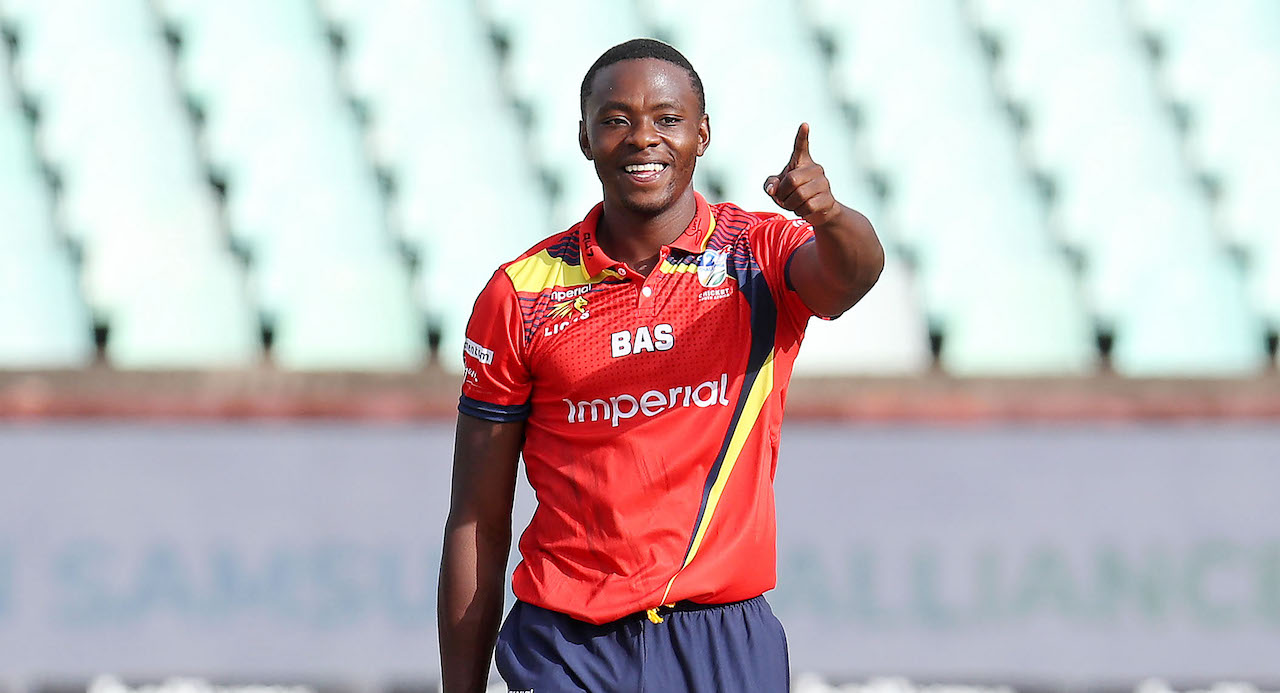
Muzi Ntombela/BackpagePix
Sometimes he gives batters a menacing blank stare.
There is no point in showing the batter that they have managed to get one shot in. Rabada is a gladiator. Gladiators do not applaud their opposition during a duel. Doing so helps the opposition grow in confidence. A confident foe is a dangerous foe.
Sometimes it happens that after bowling a good delivery, a jaffa that leaves the batter rattled, Rabada commits an error and misses his length by a few inches and gets punished for it. When that happens, Rabada gets angry with himself.
“I hold myself to a higher standard, so I get frustrated with myself when something like that happens,” says Rabada.
Sometimes it is not just one delivery that goes wrong. Sometimes it is two, three, or four deliveries. Each time that it happens, Rabada gets angry with himself and tries to make corrections in his mind on his way back to his mark. It works most of the time and he is able to bounce back. In rare moments he does not. When it does not work, he feels discouraged.
“When I am a little down KG always reminds me: ‘You’re an IPL winner, twice, and you’ve won Man of the Match awards. So why are you sitting here denouncing yourself?’” Lungi Ngidi shared.
When he feels discouraged, Rabada follows his advice to Lungi Ngidi.
He transports himself to his ODI debut. The first three deliveries of his second over were dot balls, and he made history with the last three deliveries of that over.
Kagiso Rabada pitched it up the fourth delivery on the middle and off. Tamim Iqbal thought the ball would hold its line. It didn't. Rabada bowled him out for a 13-ball duck. He angled the fifth delivery at Litton Das’ pads. Litton flicked it straight to Farhaan Behardien at mid wicket for an easy catch.
Rabada’s last delivery was quicker and angled at Mahmudullah's pads. The delivery was not as full as the one that dismissed Litton Das; it was on a good length. Mahmudullah tried to work it to leg, but he missed it and was trapped lbw. In his second over in ODIs, Kagiso Rabada had a hattrick.
With his hat trick against, Rabada became the second player in the history of cricket to take a hattrick on debut in an ODI match. Taijul Islam was the first bowler to do it just a year earlier.
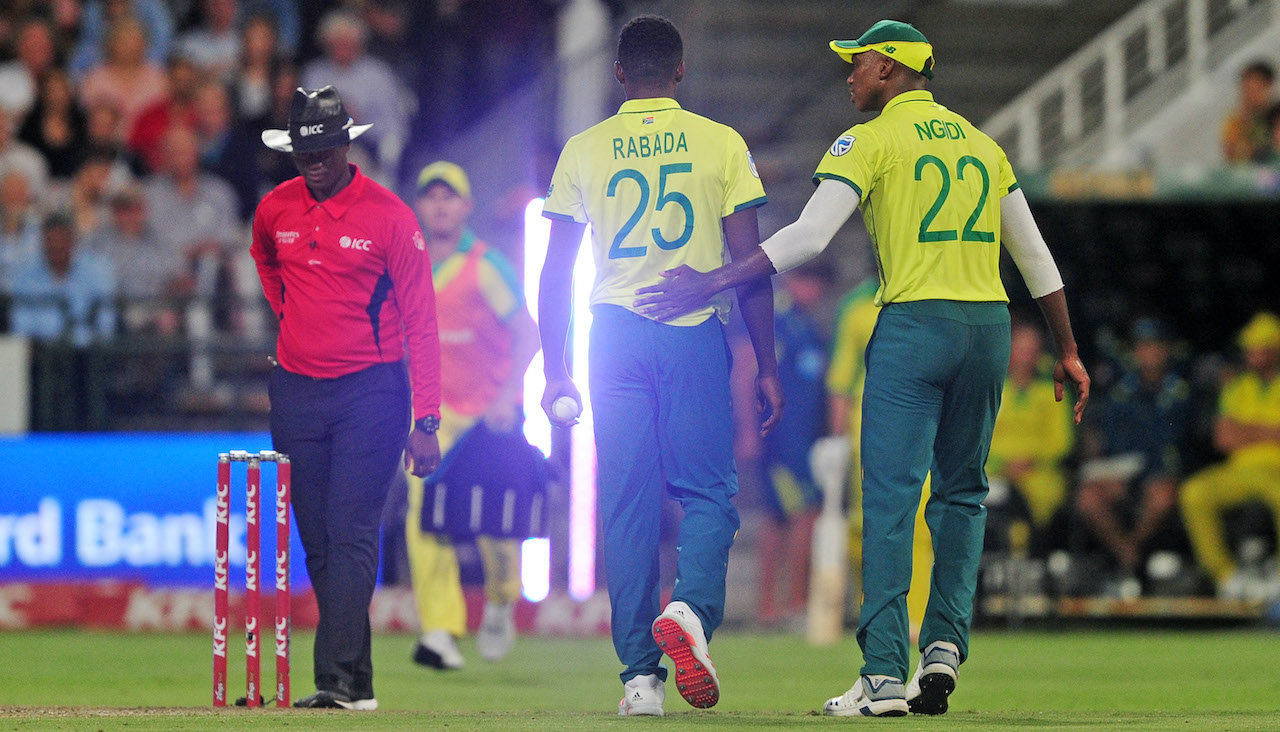
Ryan Wilkisky/BackpagePix
“When I am feeling a little down, I think about those moments,” says Rabada. “I think about bowling the last over at a school game and winning the match. I think about the Cubs game where Jayden Broodryk and myself put together a 53-run partnership to win the match for Gauteng. I think about the Under-19 World Cup and the role I played to help the team win the title. Those moments remind me that I can do anything if I set my mind to it.”
Balls number three, four, five and six depend on what the pitch is doing and how the bowler is reacting. Rabada comes into the over with a plan, but it is not set in stone. He is adaptable.
Something that Charl Langeveldt, one of the coaches who has had a huge impact on his career emphasizes.
On the field, Rabada also lives out Langerveld ‘triple Cs’: communication, clarity and commitment.
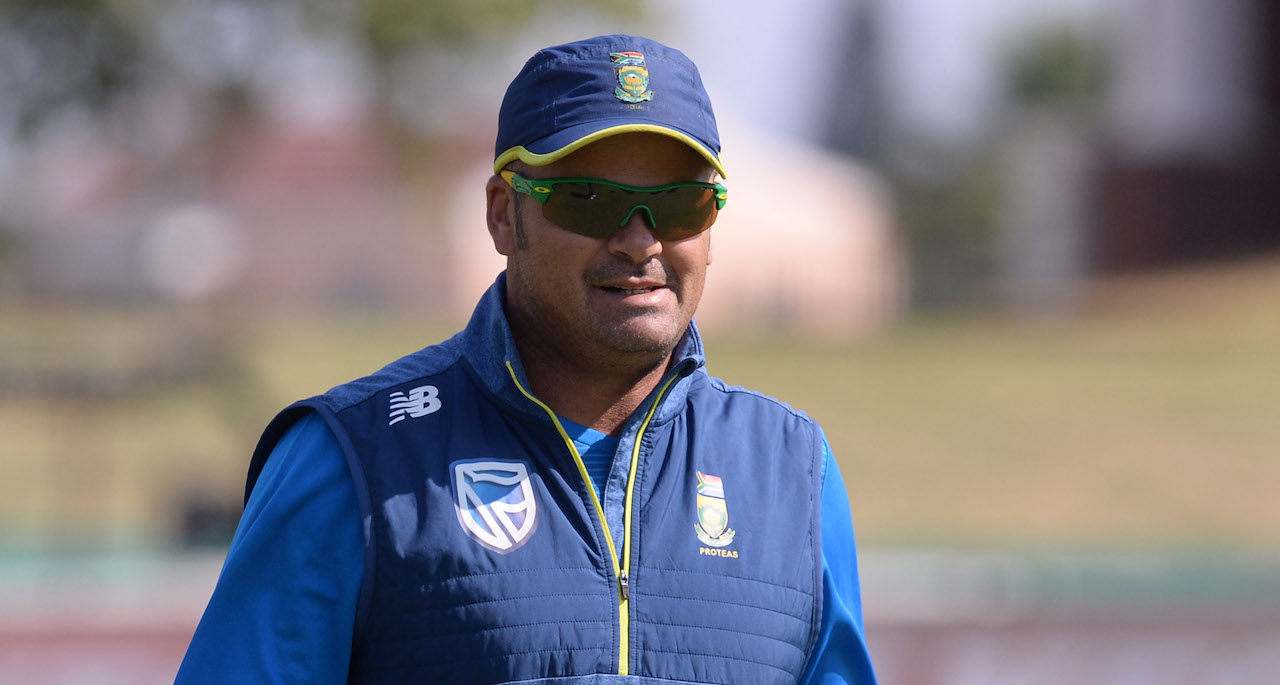
Charl Langeveldt prioritises ‘mental side’ of game
By Marc Jacobsen
Proteas bowling coach Charl Langeveldt has placed much emphasis on his bowlers’ mentality ahead of the T20 World Cup in Australia that starts late in October, especially in light of their infamous ‘chokers tag’.
South Africa have traditionally entered ICC tournaments as one of the favourites – due to their successes in bilateral series – but had, for some reason, always failed to win any silverware.
It is due to this that they’ve developed that notorious tag, which may have snowballed over the last 20-odd years, hindering the side more from getting real glory – particularly in recent series and campaigns.
This may very well be attributed to the mental aspect of the game, which Langeveldt has rightly addressed.
“The key thing is the mental side of it,” Langeveldt told Cricket Fanatics Magazine in response to his bowlers’ preparations ahead of the World Cup.
“The World Cup is a high-pressure tournament and sometimes it’s about dealing with the mental side of that. There is competition within the squad, which is great, so I’m just focusing on ticking all the boxes.
“But the big thing for me is about being able to win those high-pressure situations and moments.”
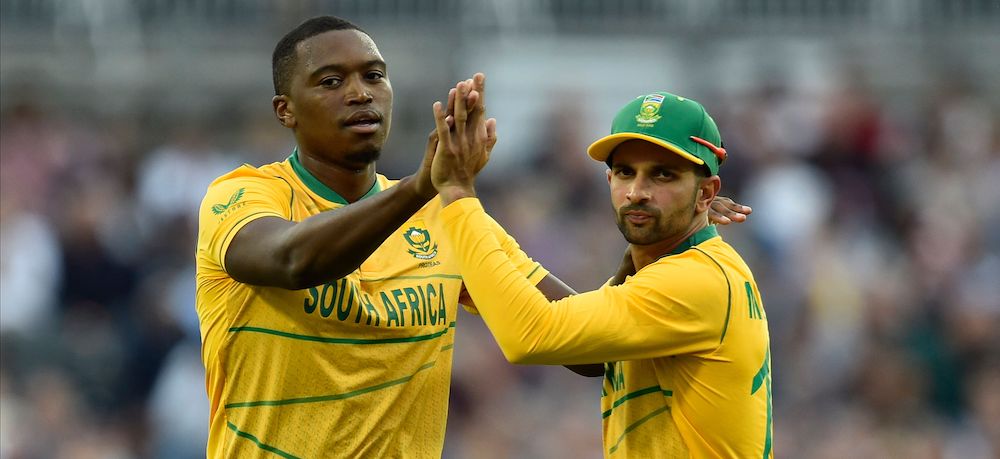
Photo by Graham Hunt/ProSports/Shutterstock/BackpagePix
In dealing with these mental aspects of the game, Langeveldt, who himself played nine T20Is, 72 ODIs and six Tests for the Proteas between 2001 and 2010, said his way of going about it involves personal engagement.
“For me, from personal experience, it’s about talking about it,” he said.
“Sometimes when you get hit for a boundary – then we’ve got a three-second rule at the back of your mark to just clear your head and commit to the next delivery.
“That is key especially in T20 cricket, because bowlers tend to be more under pressure than the batters,” he said, explaining that when a couple of balls go defectively then bowlers tend to often implode and “just want to finish the over” instead of bowling with precision.
SA had recently suffered a dreadful away 2-1 series defeat to India, where the decider ended in an anti-climax for the visitors.
However, Langeveldt isn’t reading too much into that ahead of the World Cup, citing “completely different conditions” as his reasoning.
“In the back-end we know we have to improve. I always say to the guys that they must improve by five per cent in every game, even if you’ve had a good game. That’s part of our reviews and debriefs the next day, where we just chat about things.
“But at the end of the day the conditions are so very different,” he said, comparing India’s conditions to that of Australia.
He added that Australia’s conditions are hotter than humid, which was imposed harshly by India, and that their fields are “bigger”, while their wickets offer the same sort of “pace and bounce” as SA’s pitches.
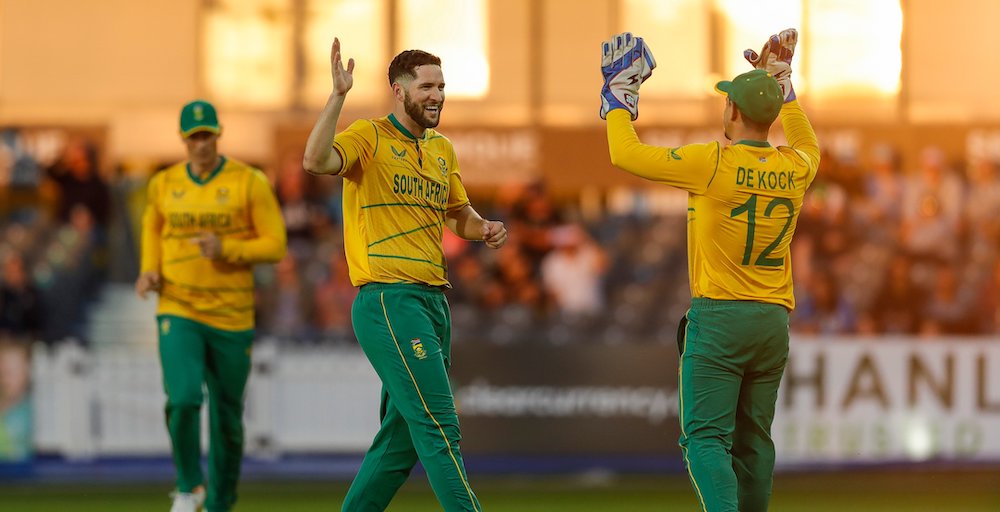
Photo by Ben Whitley/INPHO/Shutterstock/BackpagePix
On selections, it may be sometimes tricky to strike the right balance between pacers, spinners and all-rounders in a T20I side’s line-up, especially when it comes to death bowling. But Langeveldt has assured that they’ve “got all bases covered” in this regard.
“We’ve got two extra all-rounders and two spinners – a wrist spinner and a left-arm spinner. But you always have to gauge, on the day, what is best for that specific ground and who has been the best bowlers on that specific wicket.
“Then we also have to look at the opposition. For example, we’ll have an extra spinner against the West Indians because they’ll more likely be successful against them.
“I also think we have a very well-balanced team when it comes to pace attack. We’ll go in with five bowlers and then we’ll have guys like [Aiden] Markram and Stubbo (Tristan Stubbs) who both can ball a few overs.”
He said they’ve got the ideal mix of pacers to force the batters into hitting the ball deep into the longer parts of the boundary, since, as he explained, Australia’s fields are bigger.
“But also, we’ve got variations. They’ve all got good slower balls where we’re able to adapt to the conditions.”
The 47-year-old said the side is confident in their batting and bowling ahead of the World Cup, because “we’ve grown a lot in the last two years from where we’d come from”.
The Proteas are set to kick-start their World Cup campaign against a to-be-determined qualifier on October 24.
New! Business Corner
Cricket Fanatics Magazine has the visibility, infrastructure, expertise and toolset to promote your brand, business, product or service.
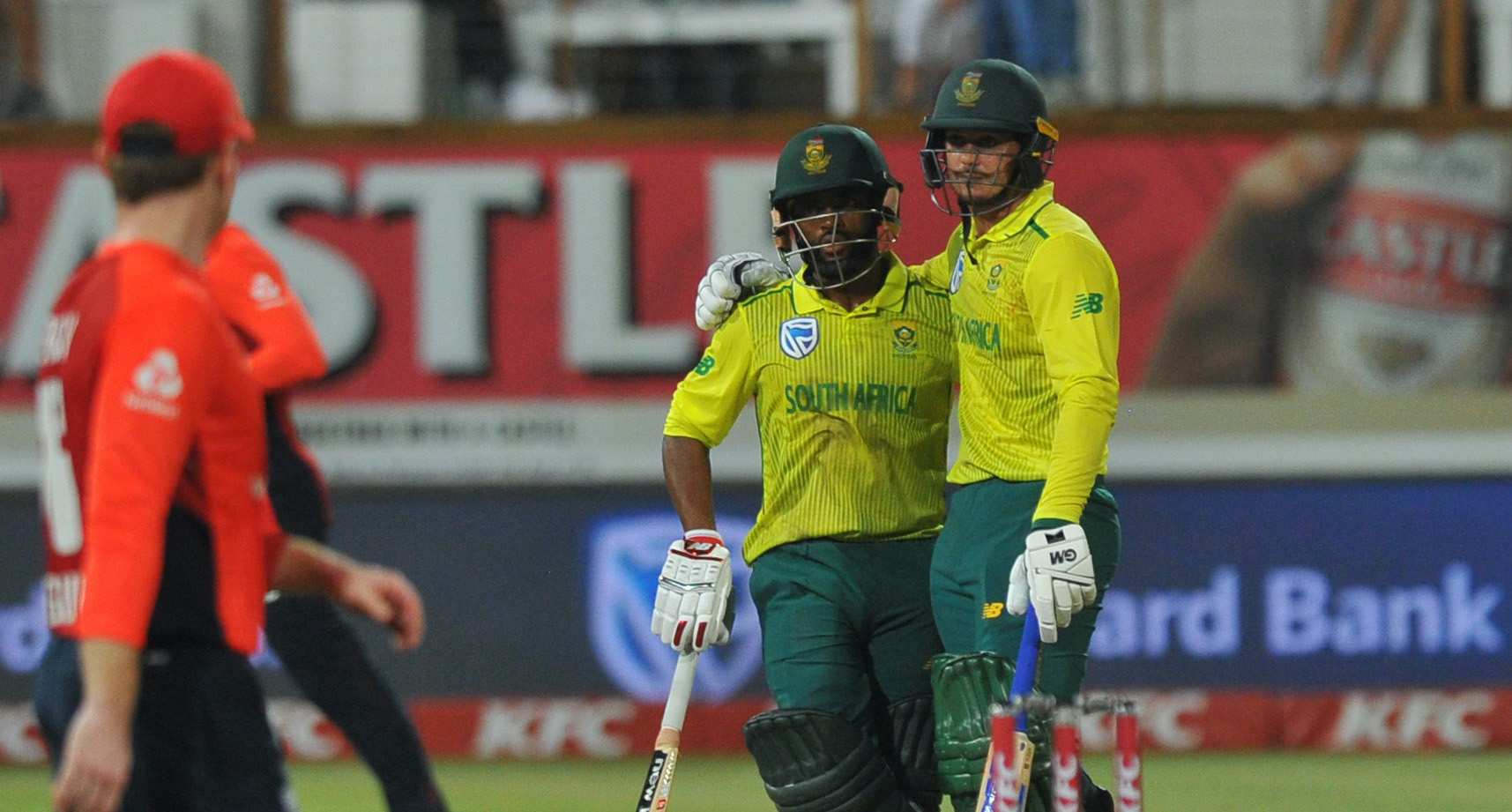
‘Building cohesion’ paramount for Proteas batters
By Marc Jacobson
Renowned coach Eric Simons has suggested that the Proteas side needs to achieve equilibrium from within their batting unit if they are to attain improved results, and better yet, to enjoy glory at the upcoming ICC T20 World Cup in Australia.
South Africa has a high expectations for the Proteas, and despite them having won the majority of their T20Is this season, the team had recently suffered a 2-1 series defeat to India, having only won the third and final ‘dead rubber’.
As a result, the side has come under much scrutiny from pundits and fans alike, especially regarding their batting standards and that of skipper Temba Bavuma, who’d scored measly scores of 0, 0 and 3 in the Indian series.
Simons, who was appointed as the assistant coach of the Joburg Super Kings ahead of the inaugural SA20 early next year, however believes that the Proteas still have much to offer with the bat, particularly with the “all-rounders we have at our disposal”.
But focusing on some of SA’s pitfalls, Simons added that there needs to be solidarity from within a T20 line-up, which the Proteas have lacked at times.
“People tend to undervalue the importance of cohesion in T20 cricket. That means guys have been playing together for a while and understanding their roles,” Simons told Cricket Fanatics Magazine.
He, therefore, hints that consistency in selection is paramount ahead of a major tournament such as the World Cup.
“If your top-7 can bat together for the last 10 matches leading up to the World Cup, then you have a far better chance of being successful than if you’re chopping and changing.
“Building cohesion and defining roles from your batting line-up is important,” he said, touching on SA’s recent struggles between openers Bavuma and Quinton de Kock, who’ve both failed to really get going, especially the former.
“How they bat together is important,” he said, explaining that De Kock has
battled a little bit with regards to his strike rates “compared to the way he [usually] plays”.
“But I always say in T20 cricket that you mustn’t look at individual strike rates, you must look at the partnership strike rates. For example, if the opening partnership is going at 150.00 with one going at 200.00 and the other at 100.00 then that’s fine.
“[As long as] they play their roles and support each other. It’s important for Temba and Quinton to understand their roles and how they are going to do it. Defining those roles is very important.”
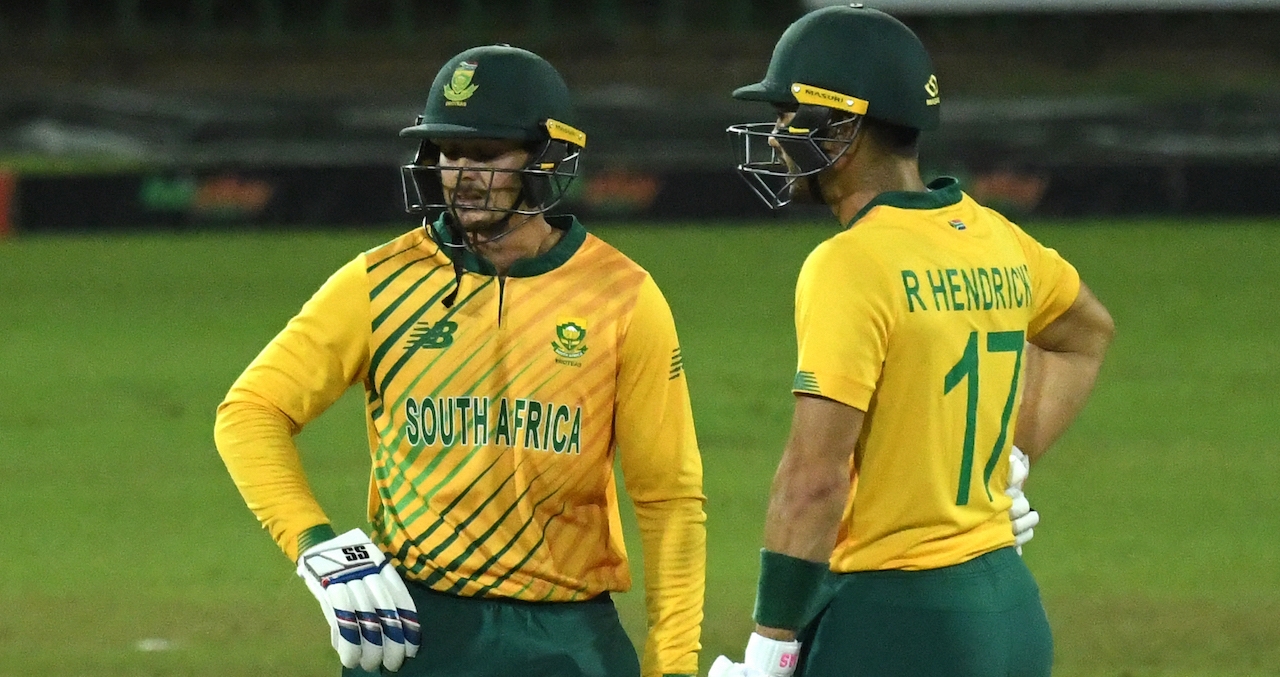
Pradeep Dambarage/BackpagePix
De Kock has begun to find some decent form after his setback in the first T20I against India, having scored 69* and 68 in the following two, which is something the 29-year-old needed to achieve to “find his mojo again”.
“Quinton is a world-beater and he’s one of the best in the world with the job that he does. If I was involved with him I’d say ‘go out there a score a bad fifty’, [because] in that process you’ll find your rhythm. It’s more a case of sticking true to who you are,” Simons added.
The former Proteas coach added that the players need to understand the conditions that Australia will pose at the world showpiece is also vital with regards to how they aim to score runs. This is something the South African batsmen need to manage.
He said the best way to prepare for the World Cup is by “deciding early on who your players are and then making them right”.
“We should know what our lineup is going into the first match, because we’ve played together enough. To me, it’s more about deciding this is the way and style we’re going to play, this is the six or seven that complement one another and within that we’re flexible and then coaching it into the players.”
Simons acknowledged that the Proteas are “a really good side on paper” and that they “need key men performing” to stand a better chance at the World Cup.
David Miller’s recent exploits of smashing 106 (47) in the second T20I against India and Rilee Rossouw’s scintillating knock of 100 (48) in the third match holds true to those sentiments.
South Africa are set to kick-start their T20 World Cup campaign against a to-be-determined qualifier on October 24. Besides the two qualifiers, the Proteas are grouped with Bangladesh, India and Pakistan.
Advertisement
Ezra Poole's Online Wicketkeeping Academy
Learn how to Master The Craft of Wicketkeeping Without Having to Hire a Full-Time Personal Coach.
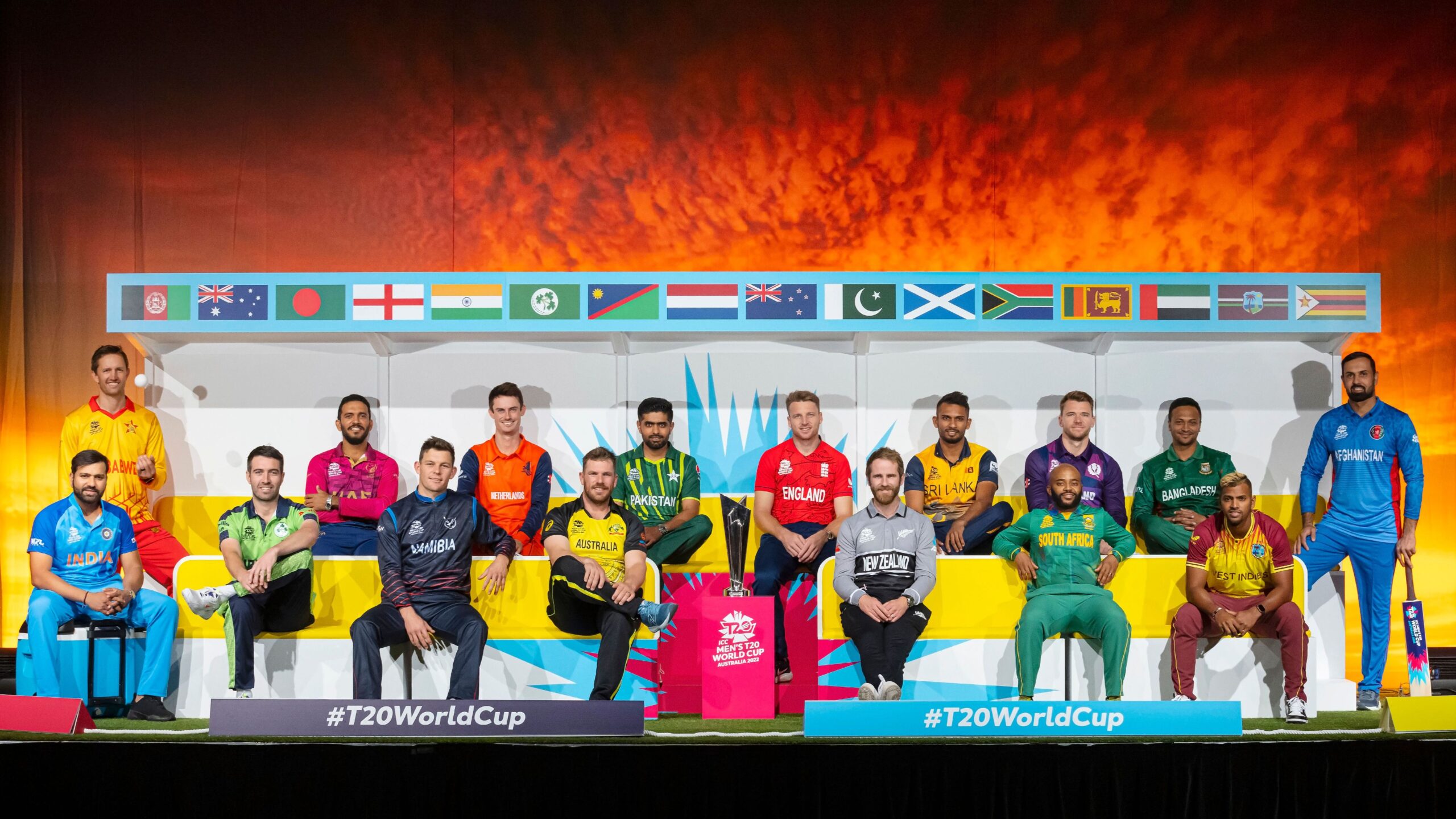
T20 World Cup Preview
By C.S Chiwanza
The official T20 World Cup warm-up games have kicked off in Australia - a sure sign that the much-anticipated global showpiece is upon us.
Writers are prepping their preview articles. Tournament previews are a scam. Sportswriters pretend to have crystal balls which help them peer into the future and predict potential tournament winners, the teams with an outside chance to win and might do it, and the dark horses - the underdog that has the potential to cause huge upsets.
It’s a stroke of genius. The less bold writers who want in on the action aggregate the views of two or three big names, and ‘form an opinion.’ Social media vultures simply copy and paste.
We write previews because there is not much that one can write under the title, ‘anything can happen.’ That’s not what readers want. If you say anything can happen enough times and you lose credibility. Readers want insight. Others want confirmation of their biases. That’s why you are here, either for insight or confirmation bias. Sadly, I provide no insight. I don’t know the future, I have no crystal ball.
So, what is the point of this preview? Nothing, because it is not a preview. But you have come too far to turn back.

Credit: Photo by Ben Whitley/INPHO/Shutterstock/BackpagePix
ICC events are fun. A bunch of nations congregate to compete, how could that not be fun? They are way better than bilateral series, which have lost their lustre. That's why everyone loses money when they host a bilateral series. Unless, of course, they are hosting India, then suddenly you have around a billion people watching. The Ashes does well. The golden age of international cricket is gone.
A new era is here. The T20 era. 19 years after its invention, the 'purists' are banging their heads against the wall and still insist on calling T20 cricket 'hit and giggle.' But, they forget that cricket is constantly evolving. Overs used to be four balls long, then they took eight deliveries to complete. The six-delivery over only became universal in 1980.
The one thing that hasn't changed is the length of the pitch. It was measured using Edmund Gunter's chain in 1677, it is still measured by Gunter's chain. 66 feet, 22 yards or 20.12 metres
Cricket is closely mimicking football - international tournaments are the only reason nations play against each other. These days, bilaterals only serve as preparation for ICC events. The only thing that would make ICC events better is having more nations take part, like football.
Anyway, going into ICC events, I like to have a heel. A team that I actively root against. Not just any team, but a good team to root against. There is no point in rooting against a team which gets knocked out in the group stages.
There was a time when Australia was the best team to hate. Rooting against Australia was easy. Back then, Australia was absolutely the best team in all of cricket to hate. Do you know why? They embraced it. They enjoyed it. They thrived on it. They played the heel as well as Ric Flair - if you watched WWF you get this reference.
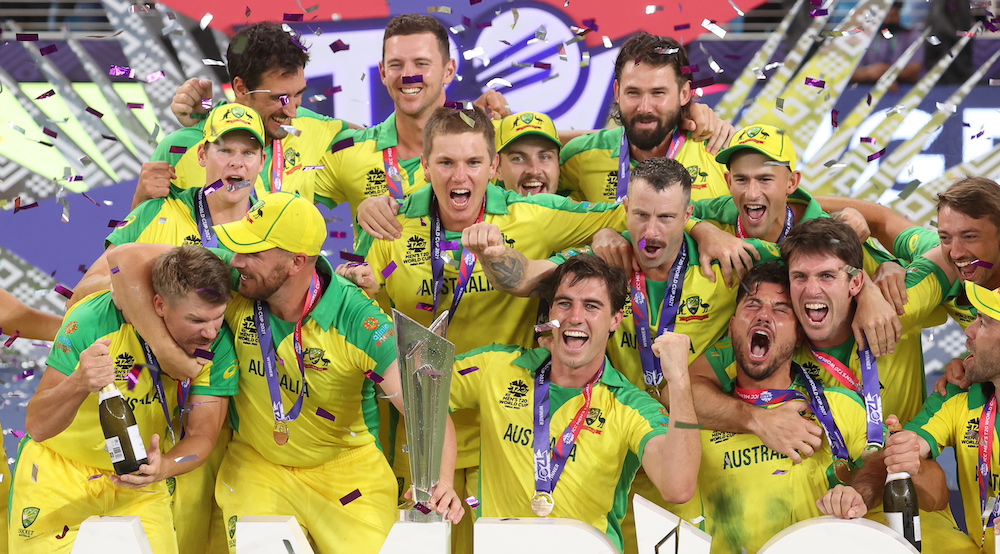
EPA/DAVID GRAY AUSTRALIA AND NEW ZEALAND OUT
They ruthlessly sledged the opposition. They were masters at the craft. The craziest bit is that they appointed themselves as arbiters who determined where the line that should not be crossed was. They never found themselves on the wrong side of that line. You cannot beat that level of arrogance.
As recently as 2015, for instance, the Australian team declined England captain Alastair Cook’s invitation for a drink in the Cardiff dressing room after the first Test of an Ashes battle. They were proper pricks. It was not just the players, it was everyone involved with Australian cricket.
There was something magnificent about those Australian teams, something that made them a great team to love to hate. Then Australia decided that they no longer wanted to be the heel in international cricket. After 2018, the sandpaper incident, hating Australia was no longer fun.
Yes, Australia are the hosts and the defending champions, and they have Mitch Marsh, they have Glenn Maxwell, “The Big Show” and they have Tim David, the even bigger show. That's a lot of fireworks. They also have a great bowling attack. But, they do not wear the heel tag well. It doesn't suit them anymore. Glenn Maxwell is a good guy, Tim David keeps his head down and is polite with everyone and Mitch Marsh is the player who Australians did not like very much. How can you hate that?
The second problem with finding a heel is this: Things have changed. There was a simplicity to things back in the day. There were teams you liked and teams that you did not like. Things were black and white. Not anymore. The lines are blurred now.

Photo by Deepak Malik / Sportzpics for IPL
Franchise cricket has commodified cricketers. They now run themselves like mini-corporations with their own support systems of coaches, trainers and psychologists, as Jon Hotten put it.
The West Indies pair of Andre Russell and Sunil Narine have been spending more time at the Kolkata Knight Riders training facility in India than they do in the West Indies.
We no longer watch ICC events to merely support our home teams. We now also watch to enjoy the skill of our favourite players from the various leagues. A Royal Challengers Bangalore fan will watch Sri Lanka play Namibia because Wanindu Hasaranga is playing. Namibia also has David Wiese - Lahore Qalandars, Northern Superchargers and so on.
Bhuvneshwar Kumar and Aiden Markram play together at Sunrisers Hyderabad. They train together. They have tactical conversations. At the World Cup Bhuvi bowls at Markram. I want to see who comes out on top. They are adversaries and they are teammates elsewhere. It's a tantalizing match-up. David Miller versus Rashid Khan. Rashid Khan versus Hardik Pandya. They just won a trophy together…
For a while, it looked like my quest for a heel was going nowhere fast. Then England came to my rescue. They did a weird thing.
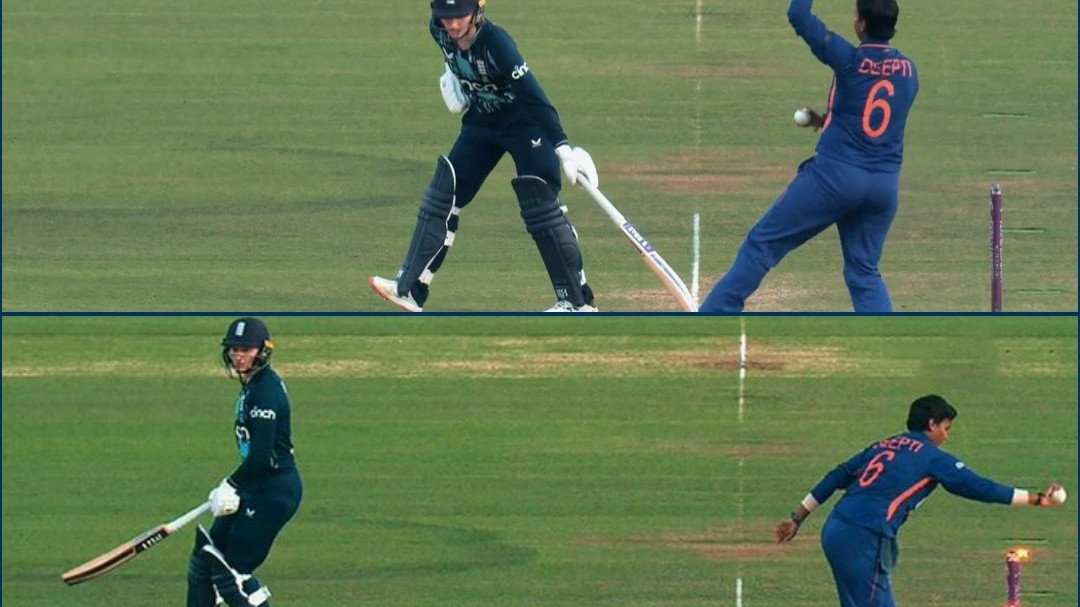
Deepti Sharma ran out Charlie Dean and the England teams, men and women, went bonkers. They didn't have to, but they did. Ben Stokes, Stuart Broad, James Anderson and everyone with a voice invoked the spirit of the game in outrage. Somehow, they managed to make Dean look like a victim, unfairly dismissed by legal means. It doesn’t make sense.
It appears the English have a different definition of what the spirit of cricket is. Everyone else considers the spirit of cricket to be rooted in abiding by the rules of the game, respecting the opposition and umpires, and competing hard but fairly. As far as the English are concerned, the spirit of cricket is a moral question, and they get to decide what is moral and what is not. Australia from the noughties, is it you in disguise?
Jos Buttler went as far as drawing a line in the turf and declared that if one of his bowlers ran out a non-striker ala Deepti, he would decline the wicket. They circled the wagons and formed a laager. The tantrum by the English was unnecessary. It smacked of entitlement. It had the maturity of a teen who feels they are unfairly treated when they are grounded for repeatedly breaking the rules.
But, it was helpful. England provided me with the perfect heel. They are also good. Almost every previewer worth their salt has them penned down as one of the favourites to win the World Cup, which is good.
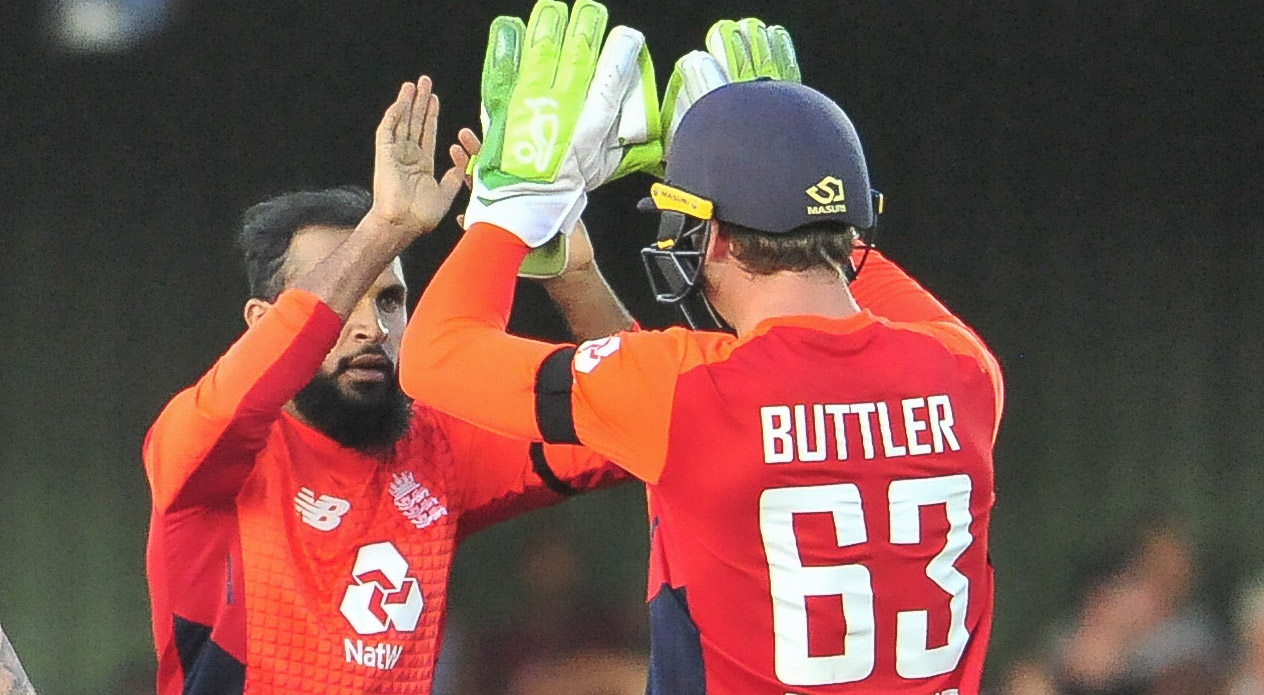
Deryck Foster/BackpagePix
My favourite response to England’s reaction was from Ellyse Perry. Perry is not a big fan of the dismissal, but she urged those comfortable with it, “If you’re going to do it, do it to England."
If you still want that preview here it is: It should be a fun tournament. Most of these teams have a shot at winning the whole thing. According to CricViz, no team has more than a 16% chance of winning the tournament. No overwhelming odds. Anything can happen.
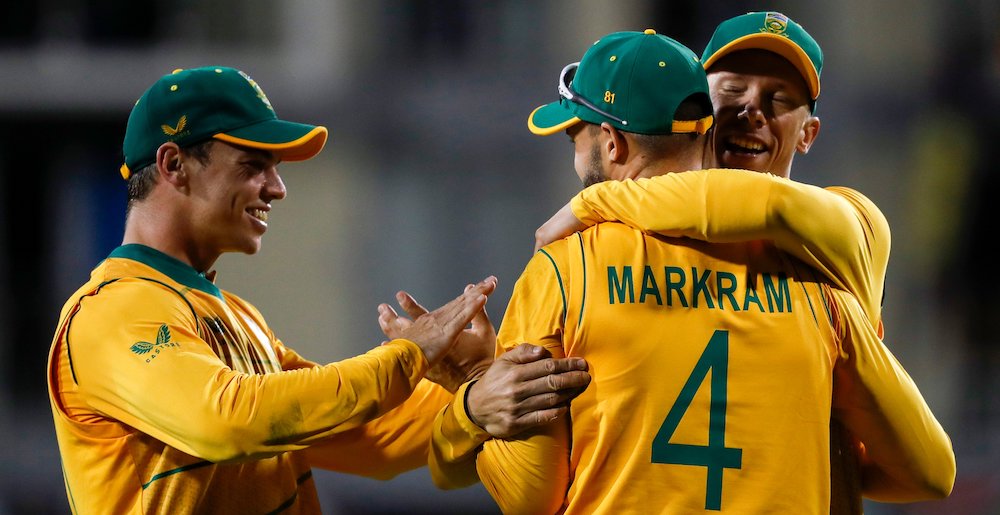
Proteas to Sizzle at the T20 World Cup in OZ
By Alasdair Fraser
The eighth edition of the Men’s T20 World Cup promises to be one of the Proteas’ best yet, as hosts Australia showcase the shorter format in a cricket-loving country.
Forgive the nostalgia but any Cricket World Cup in Australia stirs rich memories of the 1992 World Cup from a South African perspective. The Proteas have a decent record Down Under, making the semi-finals in both the 1992 and 2015 editions.
However, this T20 gig is a completely different beast – one that conjures up some interesting results and completely underwrites any of the contending teams’ previous form going into the business end of the tournament.
Defending champions Australia must be overwhelming favourites, with bitter rivals England hot on their heels. The Proteas, India and Pakistan will feature strongly too with the Pakistanis having a penchant for delivering the goods in Australia and will be looking to add to their 2009 T20 crown.
Much has been said about South Africa’s chances after an unsuccessful tour of India, but those results should be held in isolation – given the sub-continent conditions for which India and their neighbours are renowned for.
Following the Proteas 2-2 shared series with India in June the men in green and gold were immediately hard at work against England in their own backyard. They triumphed 2-1 against a powerful outfit that were dominant in the first T20 international of that series.
The Proteas came back strongly to clinch the series and showed several formidable touches that went a long way in solidifying the South African challenge as one to take seriously in conditions like Australia’s.
A quick glance at South Africa’s group shows a strong sub-continent feel – the complete opposite to the 2021 edition with historical rivals Australia and England featuring strongly in the Proteas’ group.
But 2022 is a different beast and hopefully a vintage that does not bring any form of controversy, which was brilliantly handled by Proteas skipper Temba Bavuma. Much has been said about his ability as a batsman in the T20 format, but the diminutive strokeplayer surely deserves a strong reprieve from South African supporters – given his capacity to rally his troops when the chips are down.
It may be a blessing in disguise that Bavuma’s charges have flown under the radar. They have a settled squad with genuine matchwinners on all fronts in both the batting and bowling departments.
Quinton de Kock, Reeza Hendricks, Rilee Roussouw, David Miller, Aiden Markram and Heinrich Klaassen have all been in superb form, scoring fluidly with healthy strike rates.
The headache for the selectors, though, will be to find the right combinations and formula for their top six to fire. The real headache comes in how to get the right bowling lineup that will bring its all-rounders into play.
Marco Jansen’s late inclusion at the expense of the Dwaine Pretorius adds an extra dimension to the left-handed bowling option that already sees Wayne Parnell as the incumbent.
Anrich Nortje and Kagiso Rabada are a given in Aussie conditions, which will unsettle the likes of Bangladesh, India, and Pakistan – teams that all susceptible to raw pace and bounce. Tabraiz Shamsi and Keshav Maharaj will likely swap roles, with the latter providing a much stronger batting option that will see him cracking the nod most of the time.
The positive signs are there when you analyse the makeup of the Proteas’ starting lineup. Not one of the players in this T20 World Cup squad is there as a tourist and it’s indicative of the strong unity that permeates this squad. Everyone has a role to play, and they know exactly what they bring to the table in terms of skills and what their individual roles entail.
This bodes well for the Proteas’ chances in Australia; beat India and tournament favourites Pakistan and a spot in the semi-finals is well within reach. Anything else that follows will be a major bonus and something long worth celebrating.
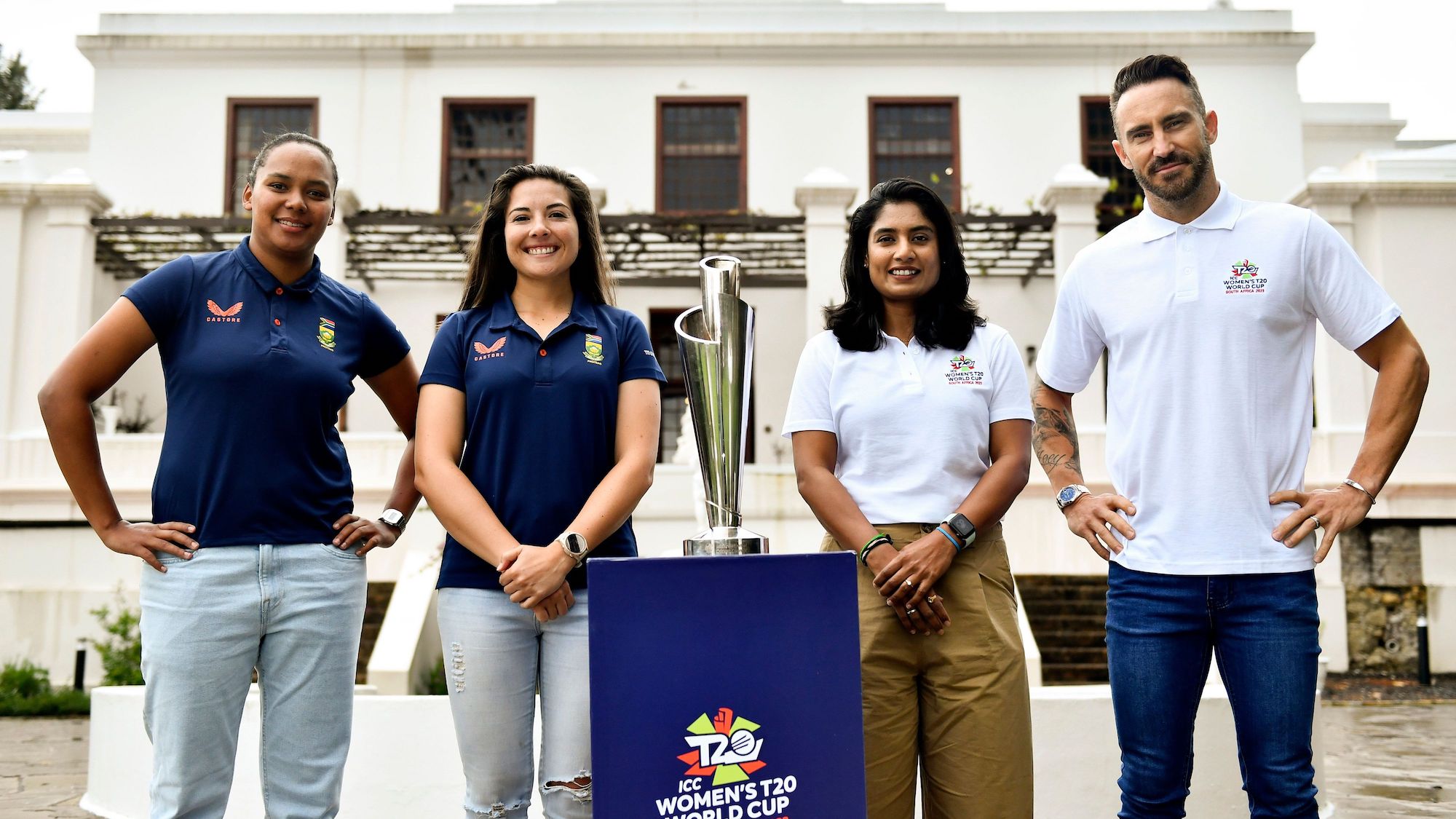
The Women's U19 World Cup will aid the growth of Women's cricket in South Africa
By Lubabalo Skhosana
The Women's U19 World Cup could aid the growth of Women's cricket in South Africa.
“Better late than never” a wise man once said, and perhaps the ICC too may say in its defence. The first-ever edition of the Men’s U19 World Cup was held in 1988 in Australia and the first edition of the women’s tournament is only going to happen next year. 35 years later.
It is, however, a good thing that the women’s game will also have a youth World Cup although the Women’s U19 World Cup will be in the form of a T20 tournament.
Initially, the tournament was set to take place in 2021 but was postponed due to the outbreak of COVID-19. It was later announced that South Africa would host the tournament just before the main Women’s T20 tournament. The U19 tournament would then serve as a curtain-raiser for the main tournament.
Having a youth World Cup for women’s cricket will be good in its entirety and will also aid many if not all countries in the growth of women’s cricket. South Africa stands to benefit from this tournament in terms of looking to grow women’s cricket and strengthening it at the same time. Having a youth World Cup has proven to be very important as we have seen in men’s cricket.
The experience and exposure that these players get are invaluable. Players like Virat Kohli, Kane Williamson, and Dewald Brevis (the list could go on and on) all played the U19 Cricket World Cup. This is a stage where some players made names for themselves.
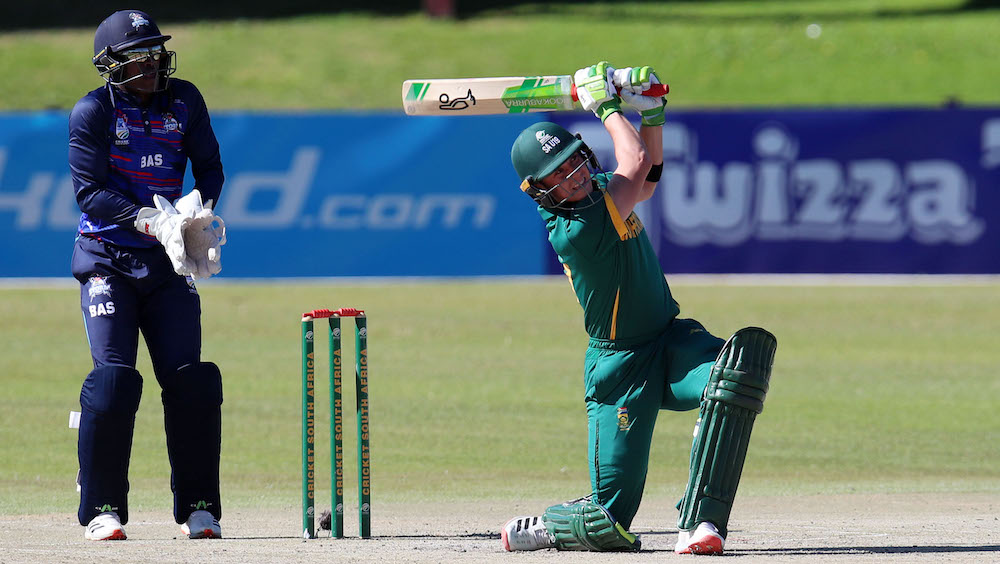
Muzi Ntombela/BackpagePix
The tournament will present an opportunity for the best U19 female cricketers from the participating countries to showcase their talent and skill in a global tournament. It can never be bigger than this. A youth tournament also contributes to broadening a country’s talent pool and enables a country to have a few players that they can earmark as their next best stars even though national selection will not be exclusive to them.
Even in a South African context, this tournament will play a massive role in growing women’s cricket. South Africa is lacking in terms of development, and it is something that has been a concern for a number of years.
For the Momentum Proteas to be able to sustain their position as one of the best in the world and to be able to always compete against the likes of England and Australia, the development of women’s cricket will have to improve and be taken seriously.
The U19 World Cup will provide CSA and everyone involved in cricket, women’s cricket in particular, with an opportunity to start investing more time and funds into the development of women’s cricket.
I wrote an article in Cricket Fanatics Magazine a few months ago suggesting that maybe having a Director of Women’s cricket could best serve women’s cricket in the country. Having someone with a passion that is specific to women’s cricket could ensure that it gets the attention it needs.
Currently, in South Africa, not many girls have an interest in cricket and this could be pinned on several different factors. However, having an U19 tournament could make cricket attractive to young girls and draw their attention whilst making those already involved in cricket want to stay.
As mentioned above, the Men’s U19 World Cup has served as a stepping stone to many male cricketers and could serve as a stepping stone to many female cricketers too.
With all being said, the fact that 13-year-olds and 16-year-old girls in South Africa will see girls in their age group participating in a World Cup will also contribute to more young girls taking up cricket. The fact that they will have people they can relate to will entice them more.
This is a big opportunity for South Africa to take steps in the right direction as far as women’s cricket is involved. Hopefully, the tournament will be properly marketed and many aspiring cricketers will have access to it.
Coach Dinesha assembled a strong and exciting squad last month after a TAP camp. The squad took on Namibia U19 and did well, winning all their matches.
It will be interesting to see who makes the final World Cup squad early next year. These girls could be the next generation of Momentum Proteas so seeing how they progress from hereon is something to look out for.
The World Cup is still a bit far off but some pretty exciting players are most likely to make the final squad if fit.
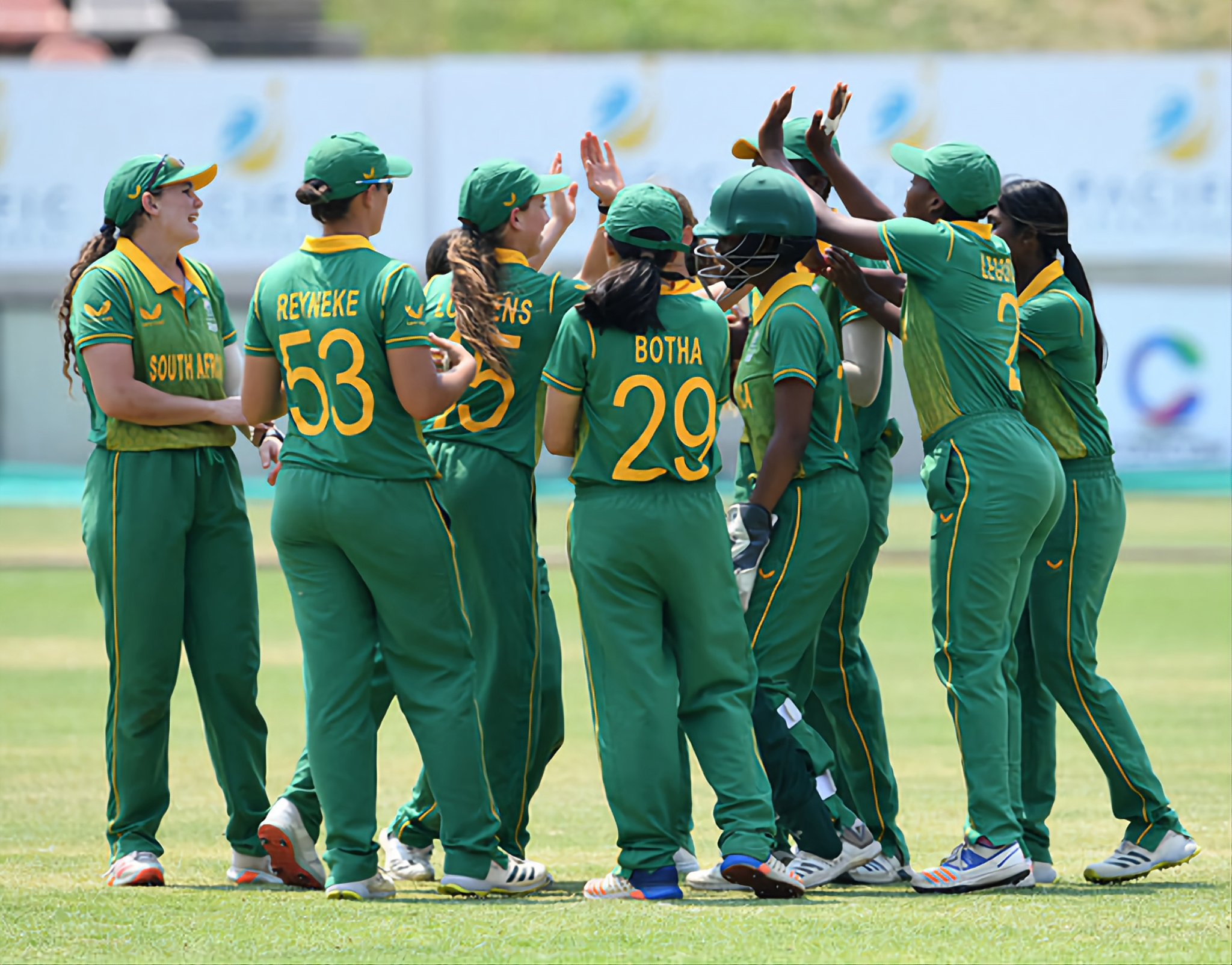
Elandri Janse van Rensburg
Interesting enough, I picked Elandri in my top 5 players to look out for in an article for Cricket Fanatics magazine. Elandri is an aggressive top-order batter who plays for North West. She is arguably one of the most exciting youngsters in South African cricket at the moment. She recently won U19 Girls week Player of the Tournament.
Karabo Meso
The Lions Wicketkeeper-Batter is diminutive in stature but a very classy batter who runs really well between the wickets.
Kayla Reyneke
A hard-hitting top-order batter just like Elandri. Kayla plays for Western Province and bowls some off-spin as well. Her offspinners could play a massive role for the team together with her exciting batting.
Refilwe Moncho
Another Lions youngster. I saw Refilwe for the first at the U19 Girls Week. She bowled with a decent pace but what caught my attention more was her accuracy and her ability to bowl yorkers. She would be my first pick of all the seamers
Madison Landsman
An allrounder from Easterns, Madison also made my top 5 picks. A very classy batter who can also take the game away from the opposition. She bowls leg spin and has played in the CSA Women’s T20 tournament.
Even though there was a squad of 15 selected for the series against Namibia, picking the final squad for the World Cup will not be easy for the selectors. There is a large group of quality young girls and each one can easily win you a game on their day.
However, I do not expect the squad to change much unless there are any injuries because ideally, as a coach you would like to have some continuity. The fact that most of these girls have played some senior provincial cricket will also work in their favour and the favour of the team heading into the tournament.
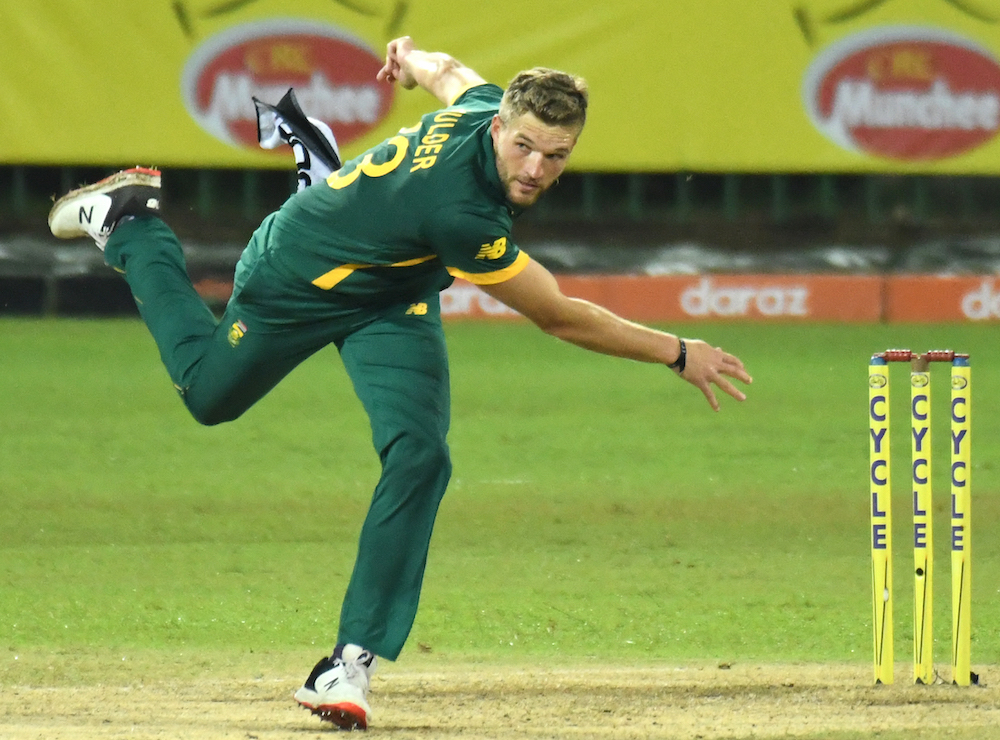
Q&A: Wiaan Mulder
By Jessica & Janine October
You made your first-class debut for the Highveld Lions at a young age. Tell us how your career in cricket began.
My career started as an 8 year old boy where my dad built nets at home, and we started hitting balls and bowling.
How do you feel about the Proteas’ chances going into the World Cup tournament? What do you think they can expect in Australia?
I think their chances are pretty good! We have a very well balanced team and I think the conditions fit our team very well! Australia traditionally has pace and bounce and that is exactly where our strengths from a bowling and batting perspective lies.
What is your most memorable highlight of your career?
Playing against England at the oval was amazing and a dream come true for me.
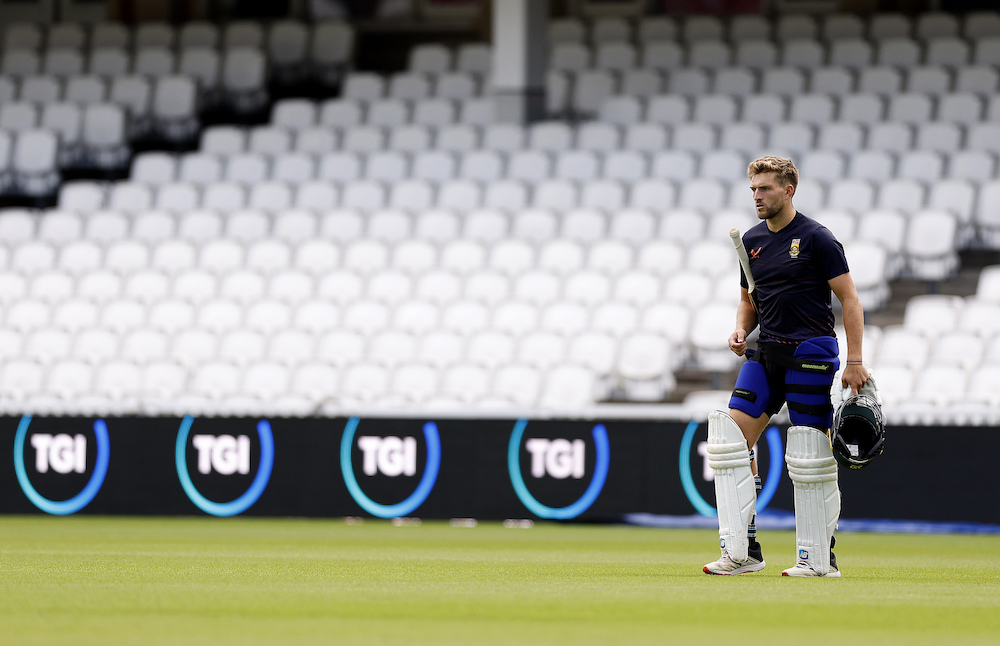
Photo by Steve Paston/PA Wire/BackpagePix
As an all-rounder, how do you handle pressure from both bat and ball?
It’s pretty difficult but I always try and stay focused on what the team needs and shift the focus away from me. As an All- rounder you are always in the game, so you have to stay in the moment and embrace the pressures and a key for me is to always focus on the team first.
How have you developed your T20 game?
I have worked really hard on bowling yorkers and have spent time developing a slower ball. From a batting side I have worked hard on power hitting and limiting dot balls. T20 cricket in my opinion is about limiting damage as a bowler and being as destructive as possible for as long as possible.
During your stint with the Leicestershire County Cricket Club, what have you learnt?
I loved every second of my time at Leicestershire and I learnt a lot about myself. Cricket-wise I worked really hard on my front foot game. I learnt how important a team environment is to people succeeding. Mentally I worked really hard on staying in the moment and focusing on the ball and what is required of me
Whose wicket do you dream of taking?
My dream wicket is Steve Smith or Joe Root

Credit: Photo by Javier Garcia/Shutterstock/BackpagePix
How do you deal with dry spells?
They are tough but in life things go up and down so staying focused on processes and not outcomes is what helps limit the duration of dry patches even though they are inevitable.
Do you have a nickname that you go by?
My nickname is Wessie and that came from Hardus Viljoen. I’m from the West rand in Gauteng so that’s how it came about.
What is your favourite ground to play on?
Wanderers and Lords
Who is your fantasy opening batting pair?
Matthew Hayden and Justin Langer
Who is your role model as a cricketer?
As a cricketer I have always loved Shane Watson. Purely because of his journey and how humble he stayed during his career
You were selected to play for the Durban Supergiants for the SA20 League. What are you most excited about in this tournament? How do you feel about being selected?
I am so grateful and honoured to have been selected for the DSG and honestly can’t wait to be involved with such a special brand. I love playing T20 cricket and having the chance to learn from Lance Klusener and the players at DSG is what I am most excited about!
Daily Show | Let's talk about it
Video Playlist
The Podcast Live Show:
Exclusive Interviews
Crossword Puzzle
Proteas T20WC Squad
ISSUE 26: Crossword Answers
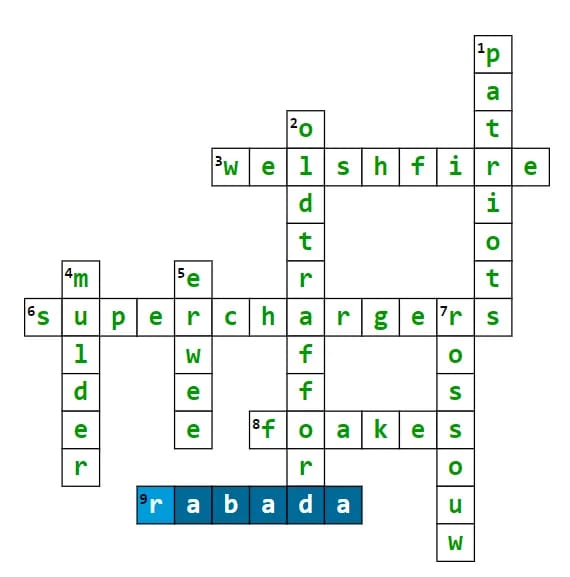

Magazine info
Editorial Director
Khalid Mohidin
IT and Technical Director
Faizel Mohidin
Contributors
Alasdair Fraser
Abhai Sawkar
Aditya Mehta
CS Chiwanza
Jessica October
Janine October
Khalid Mohidin
Marc Jacobson
Lubabalo Skhosana
Graphics
Khalid Mohidin (Cover and Graphics)
Rabada Cover Image (Cricket South Africa)
Images
BackpagePix
Supplied
Twitter
Facebook
Cricket South Africa
Video Binge List:
On Lockdown Series
The Podcast Show
Legends with Ravi
Daily Show
